Basics
100ms API collection
TL;DR - You can directly use our Postman collection to start exploring 100ms APIs.
Refer to the Postman guide to get started with 100ms API collection.
Authentication
100ms uses management tokens to authenticate REST APIs. The service required to generate this token should be hosted on your server. You must use the app_access_key and app_secret from the developer section in your 100ms dashboard to create the management token. Refer to the authentication and tokens guide for more information on generating the management token.
Architecture
100ms is a cloud platform that allows developers to add video and audio conferencing to Web, Android and iOS applications.
The platform provides REST APIs, SDKs, and a dashboard that makes it simple to capture, distribute, record, and render live interactive audio, video.
Any application built using 100ms' SDK has 2 components.
Client: Use 100ms android, iOS, Web SDKs to manage connections, room states, render audio/video.
Server: Use 100ms' APIs or dashboard to create rooms, setup room templates, trigger recording or RTMP streaming, access events.
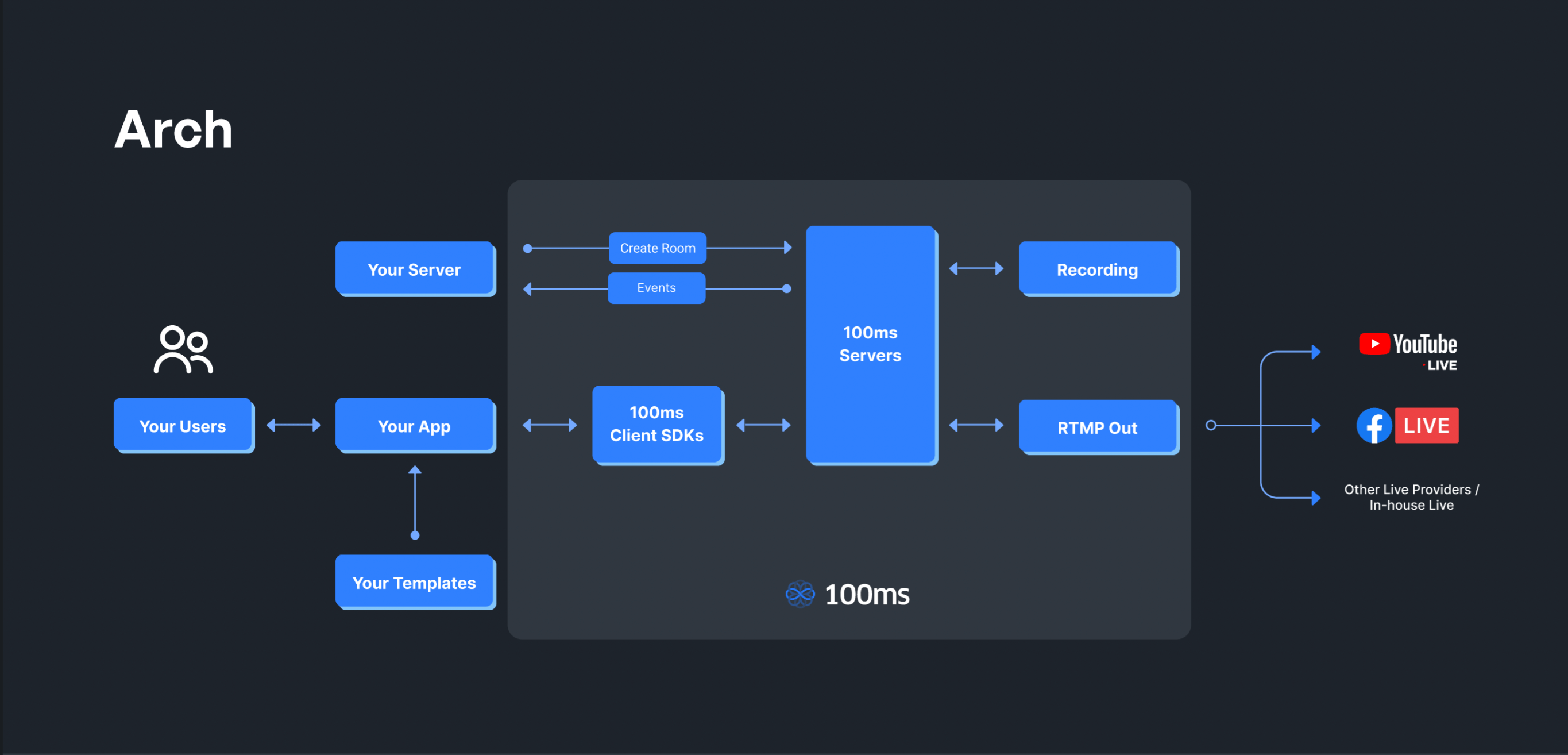
Basic Concepts
RoomA room is the basic object that 100ms SDKs return on successful connection. This contains references to peers, tracks and everything you need to render a live a/v appPeerA peer is the object returned by 100ms SDKs that contains all information about a user - name, role, video track etc.TrackA track represents either the audio or video that a peer is publishingRoleA role defines who can a peer see/hear, the quality at which they publish their video, whether they have permissions to publish video/screenshare, mute someone, change someone's role.TemplateA template is a collection of roles, room settings, recording and RTMP settings (if used), that are used by the SDK to decide which geography to connect to, which tracks to return to the client, whether to turn on recording when a room is created, etc. Each room is associated with a template.DestinationsDestinations is used to save audio/video calls for offline viewing. 100ms supports 2 kinds of recording - SFU recording and Browser recording. Also,HLS enabledconfiguration will allow you to live stream your room over HLS.RTMPRTMP streaming is used to live stream your video conferencing apps to platforms like YouTube, Twitch, Facebook, MUX, etc.WebhooksWebhook is an HTTP(S) endpoint used for pushing the notifications to your application. It will be invoked by 100ms servers to notify events of your room.
What are the steps to build a live app with 100ms?
- Sign up on 100ms using the Try For Free button in the top navbar.

- Once you're logged in to the dashboard, click on
Create Your First App
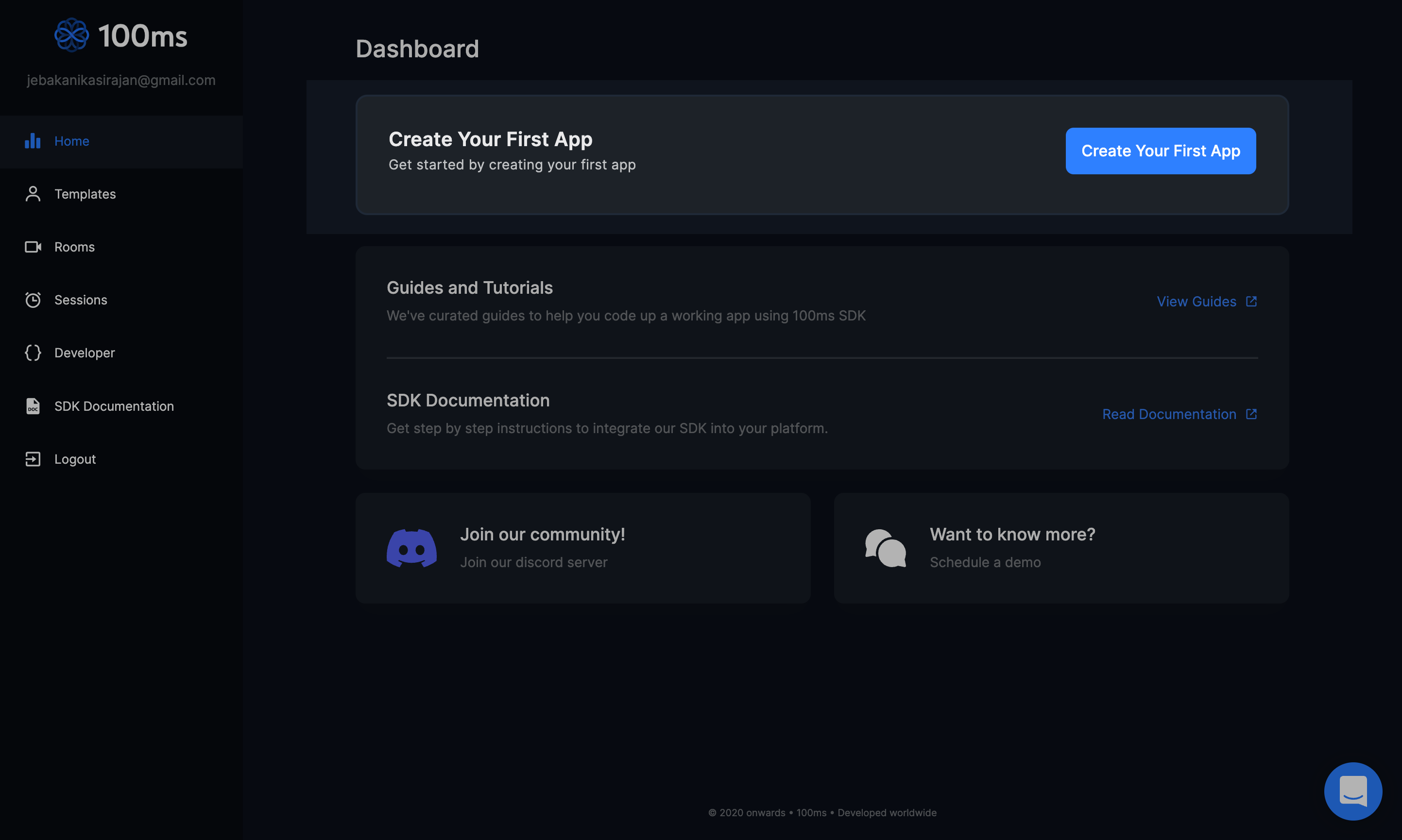
- Hover on one of the Starter Kits. Deploy one of them. (We will use the Video Conference Starter Kit for this example)
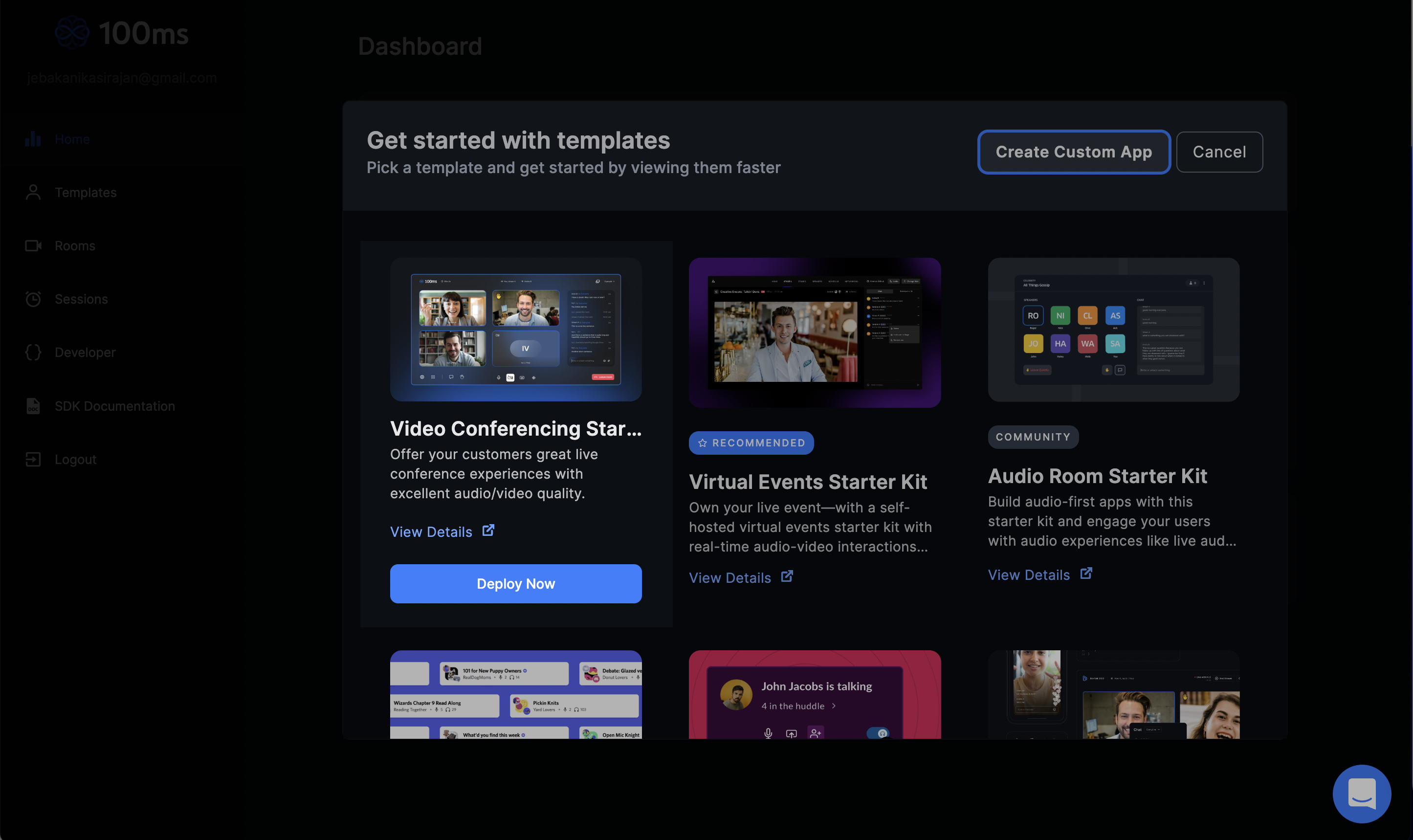
- Select your account type and fill in the details
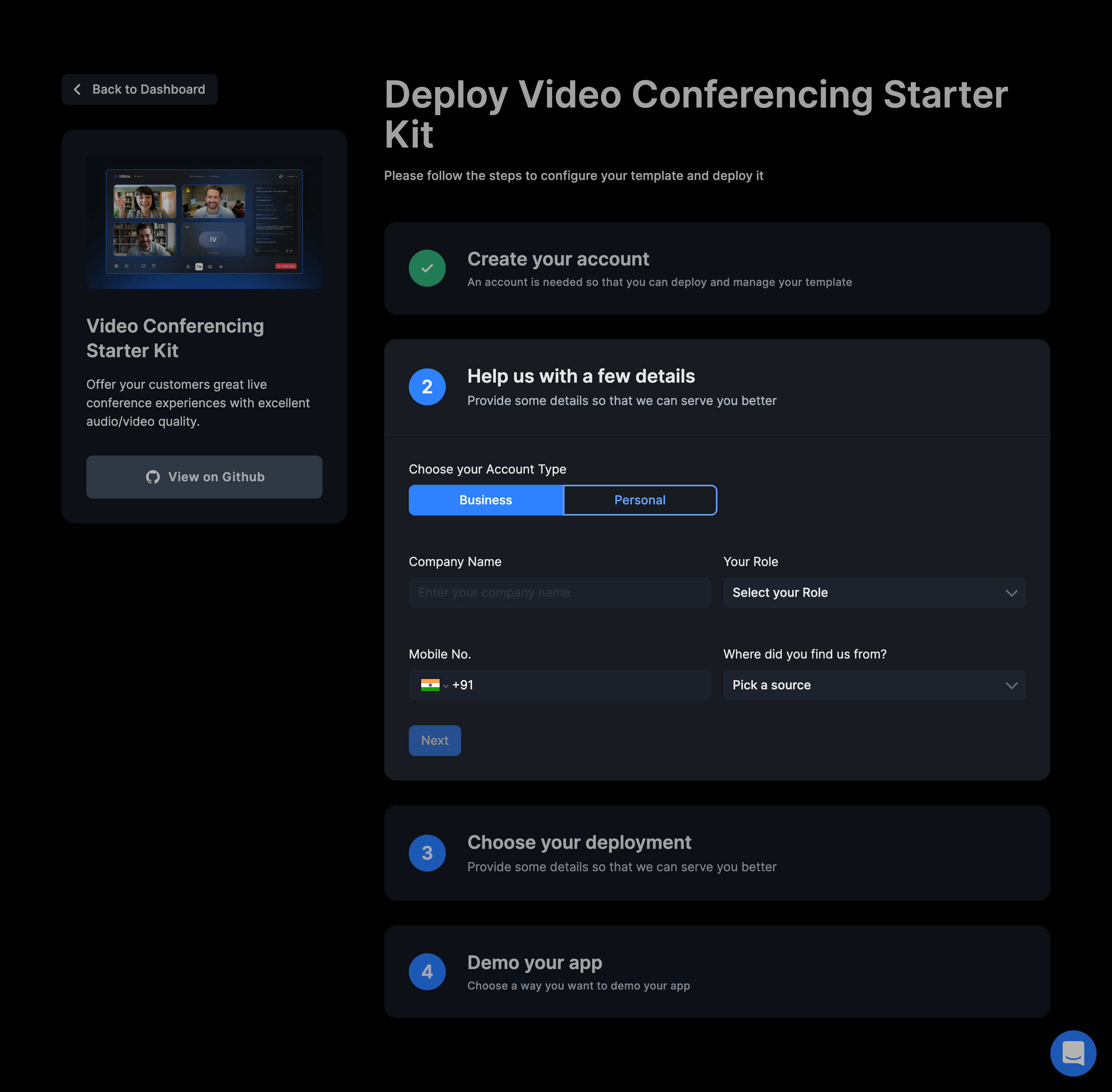
- Choose a deployment option. This could be 100ms or Vercel (based on the Starter Kit you are deploying)
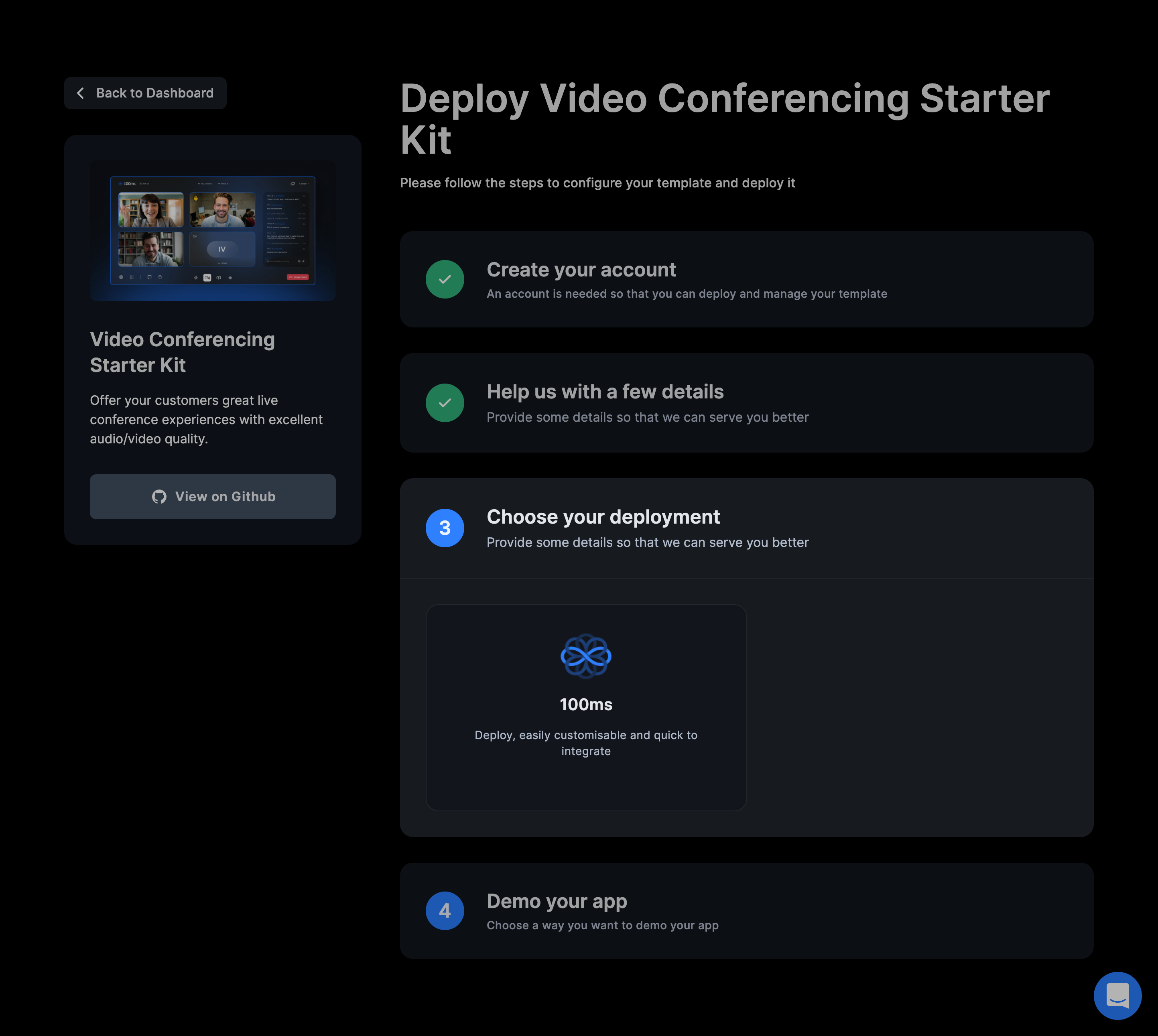
- Enter a subdomain of your choice. Please avoid entering https/http/www or dots while entering the subdomain. Select a region closest to you and hit Continue.
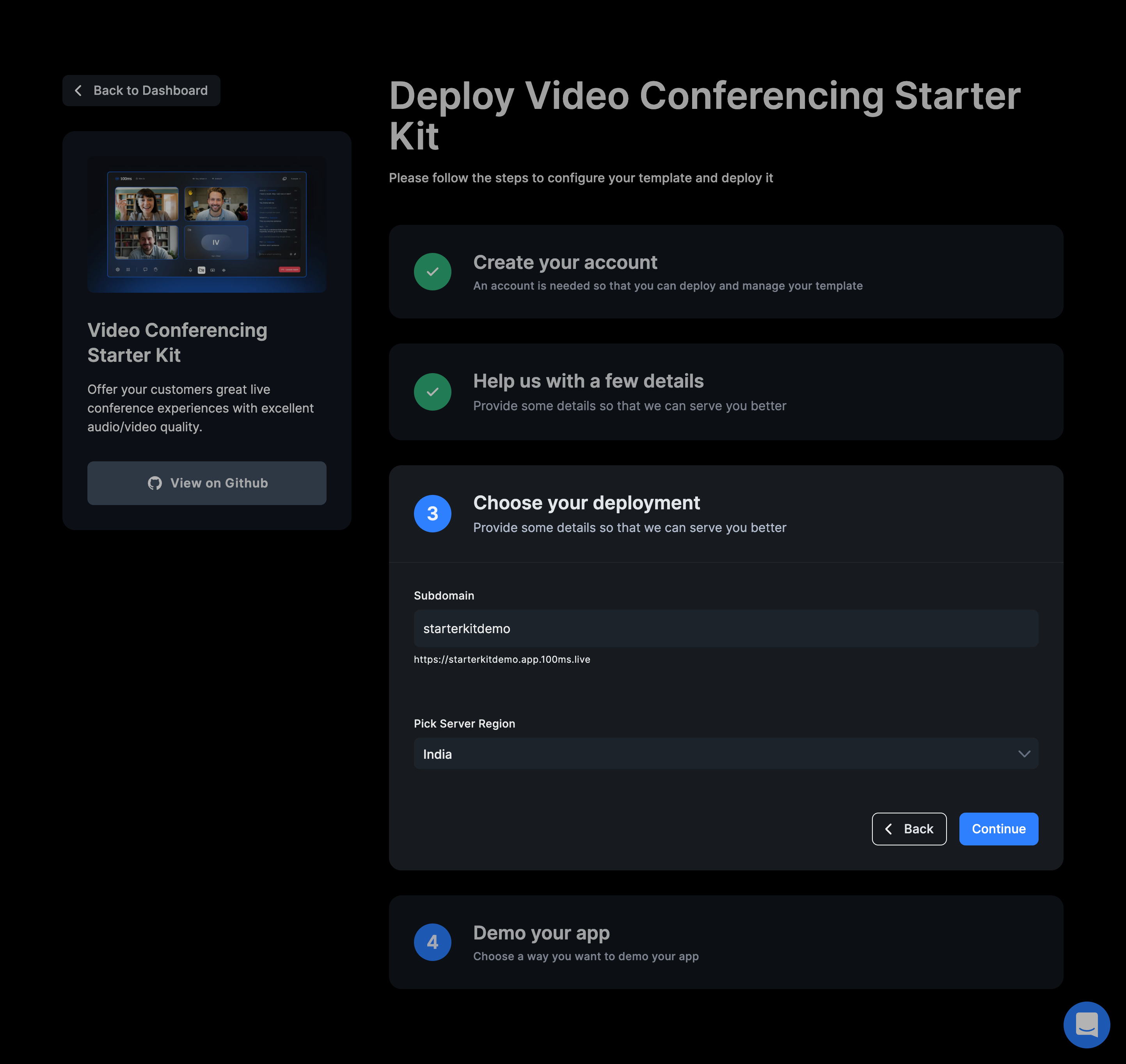
- Join or Invite someone to your deployed app with one of the roles:
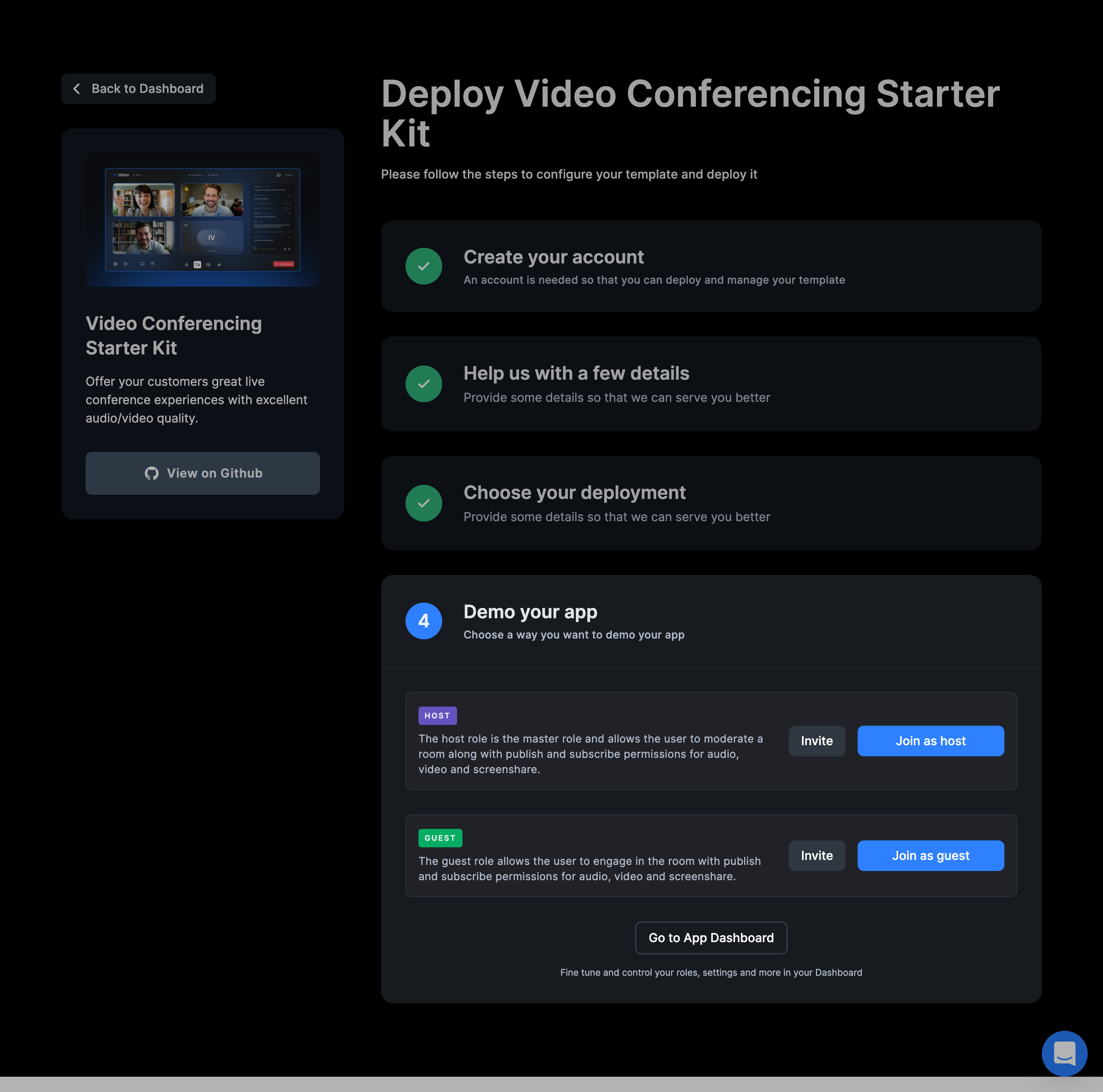
Where should I start?
Quickstart
If you want to see 100ms' SDKs in action in under 5 minutes, run one of our quickstart apps
API Overview
Create rooms, configure and maintain room policies and templates, start recording or RTMP streaming, and access events via 100ms' APIs. These APIs use standard HTTP verbs and HTTP status codes to make it simple to incorporate video into your code. We serve our API through HTTPS to secure your requests to our servers.
Note: our current version is v2.
Refer to the Postman guide to get started with 100ms API collection.